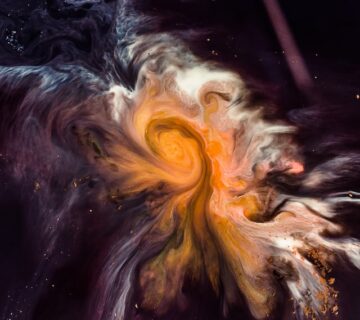Many of us in India were shocked by the death of actor, Puneeth Rajkumar, in 2022. A young actor who was a genuine and humble human being that served the world expressing his true talents. We mourned the end of his existence. What is existence? Existence is the belief that something/someone exists in the physical world and we perceive that through our senses. We supposedly exist in this world as we feel our physical bodies move about and experience this world. When the physical body dies, we say that the person has ceased to exist. Some belief systems may allude to an existence in another world. However, we attribute the identity of the person known in this world as the one that gets carried forward to another world as well. For practical purposes, if you see/touch/hear/smell/taste something in this world, it exists in this world.
If you don’t see/hear/smell/touch your family member right now, can you tell if they really exist? You may call them on the phone to verify and if they answer, then you know that they exist. If the phone goes unanswered, do they really exist? You may say that they exist in an objective physical world which remains intact even when you don’t see/hear/smell/touch/taste as you are separated by space and in some cases time (if you consider timezone differences).
What about someone who exists even after their bodily death? For example, Buddha has been dead for many centuries. The concept of Buddha exists without a body even if the concept may have evolved over time. In this case, is Buddha really dead? If not, what is really the death of Buddha? Go back to the first instance in your memory when Buddha started to exist for you. It might have been the first time that you heard or read about him. You may have continued to learn more about him and imagined him in your head that he started to come alive to you and exist in your mind space, called chittakasha.
The moment your mind thinks of another person or a thing, Buddha ceases to exist in your mind. He comes alive when you think of him again. Buddha is getting born in your mind again and again as you think of him. We think of the Buddha as the same one as the previous ones, but is it really the same Buddha in every thought of yours? Your thoughts keep popping up and disappearing spontaneously. The only thing that seems to connect the thoughts is your memory of a Buddha.
What if the memory of a person vanished? For example, you may have a brain trauma and forget who you are. You have the same body, but you may see yourself differently. Would you say that you exist as a new person as you don’t remember your older self? Similarly, if your body changes (with age/surgery) and your present identity continues, would you say that you exist as the same person with a different body? Are you the same person that you were last night when you went to bed? You could have been replaced with someone who looks/acts like you and has the same genetic information as you. What is the guarantee that you are the same person except for your memory? Are you the same person that you were 10 years ago?
Let’s take a character in a movie or a book. As you read or watch, the character comes alive in your mind. Would you say that the character ceases to exist after you have finished reading the book or watching the movie? You might agree that the character exists within that story of the book or the movie eternally and they exist in your mind when you read/watch or think of them. If the character lives till the end , then that’s their story . If the character dies after the first 50 pages or the first 15 mins , then that’s their story, and they exist within that part of the book or the movie.
Someone or something exists for us when we pay attention to them. We may have memories of someone or something, however, when we pay attention to them mentally or in the sensory world, they exist in that moment. The next time you pay attention to a loved one, notice if they are the same person as the memory you have of them . You might start to notice subtler changes or newer dimensions to them that you haven’t known before.
We think of this world as an objective world made up of things and people with fixed identities. And, these fixed identities exist in space/time where they move about doing different things. This is known as bhutakasha – material space with location, time, space.
However, neuroscience and quantum physics tell us that the physical world is nothing like the world we perceive. The physical world made up of atoms/simpler elements is not what we see. We see shapes, forms and experience colours, smells, flavours , sounds and textures based on our sensory perceptions. (Check out this interesting video on how we perceive stuff)
Our sensory perceptions are based on predictions inside our brains that are influenced by stored concepts. Concepts are formed by both genetic/social/cultural conditioning and previous experiences or perceptions. Our experiences/perceptions are nothing more than a story our minds tell us in our mental space known as chittakasha – field of thoughts, concepts, emotions, opinions, memories. People and things appear and disappear as we pay attention or remove attention from them. Even if they seem to exist in a physical world, if we don’t pay attention to them, they don’t really exist in our mental space. Just like a character in a book exists within the book even after you have finished reading it, people exist in their stories. People and things are mental representations embedded in a story.
Beyond the physical space and mental space, is the space of atman, chidakasha, the chit space which is not the body or the mind. Atman has no birth and no death. Atman has no identity. Atman is present in every waking/sleeping/dreaming moment. It is that which is aware of everything. As you experience something in the world, if you forget the “I” identity while you are amidst the experience and become aware of that which is aware of what is happening, you will become aware of the silent witness to everything. That silent witness unaffected by body-mind is the “Self”, our inner essence. Becoming aware of this silent witness beyond body-mind is “Self-knowledge” (Atma Vidya). Imagine living as a silent witness all the time. To live as the silent state is to live in union of what needs to be done in the universe and what you do. The needs/wants are no longer driven by the “I” with a name and form. One may live in synchrony, expressing one’s true talents towards what needs to be done in the world and serve others as a way of life. A way to get closer to our essence is to develop awareness of the silent witness through Sakshi Bhava. As we let go of our fears, limitations, and become responsible for our inner growth, we start to embrace self-expression using our true talents , connect deeply to everyone and everything around us, and contribute to the common good.
Ways to increase awareness:
- Practise Pranayama, Meditation, Yoga Nidra to learn sakshi bhava and increase somatic, mental and emotional awareness
- Dance, Yoga asanas, exercise to increase somatic awareness
- 1o1 Coaching, therapy for overcoming fears and limitations, embracing your self
- Daily habits like journalling, introspection and self-development exercises to find your inner talents and become responsible for inner growth
- Karma yoga (selfless service) and give back without an agenda of “I”
- Spiritual practices like studying scriptures, silent retreats, company of the learned (satsanga) to align with higher sankalpas (intentions) of the universe




No comment